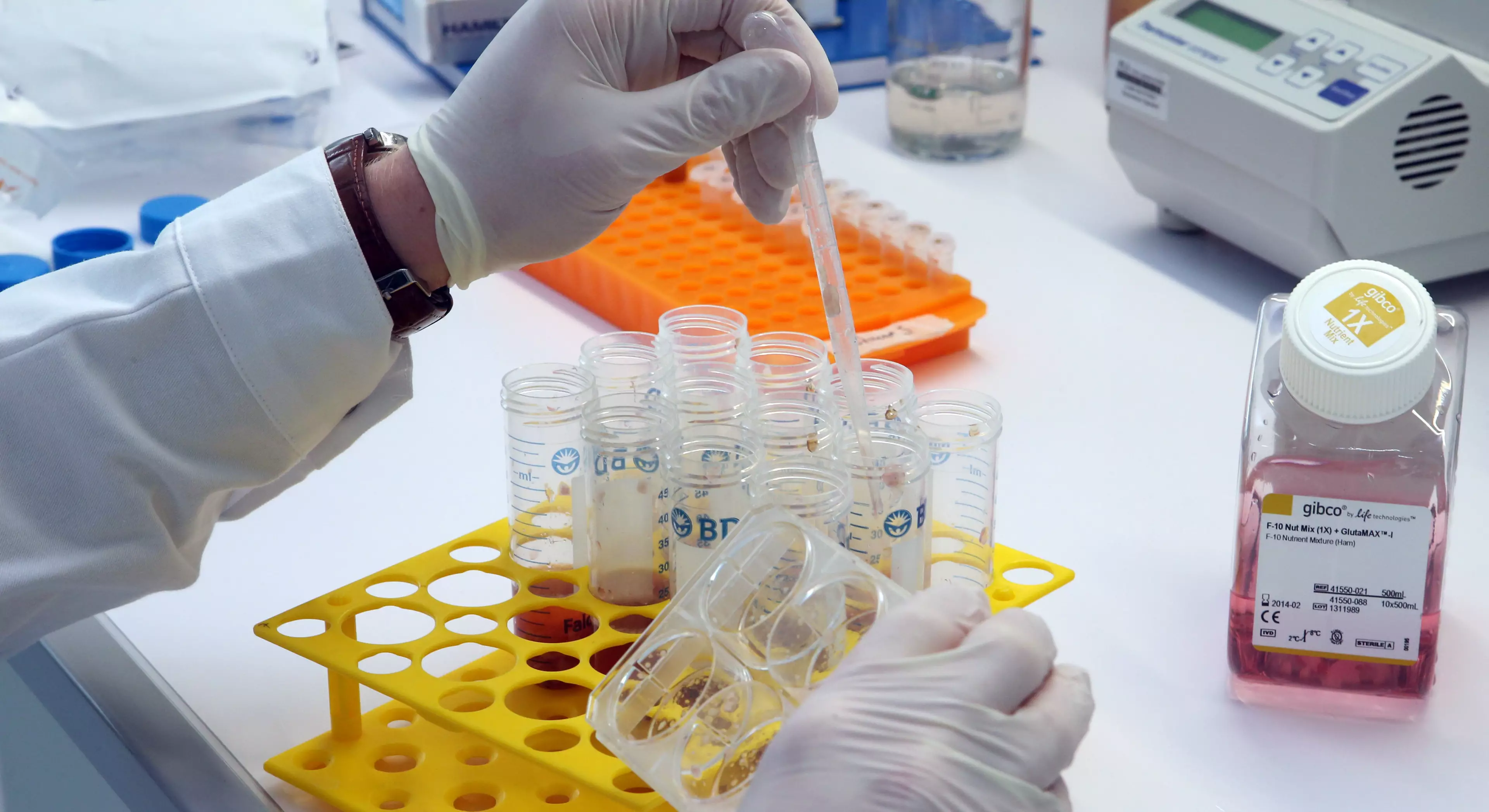
Scientists have cured HIV in animals using gene-editing, a new study has claimed.
The study, by the Lewis Katz School of Medicine at Philadelphia's Temple University and the University of Pittsburgh, involved a 'humanised' model, meaning mice were given human cells, via transplant, which had been infected with HIV.
Using a technique called CRISPR scientists found they could completely remove HIV DNA from human cells which had been implanted in mice, stopping any further infections and proving that HIV replication can be stopped.

Credit: PA
Advert
It is the first time the complete elimination has ever been achieved in model and will lead the way for a human clinical trial to begin.
The research was led by Dr Wenhui Hu at LKSOM and builds on the previous research carried out by the same team, in which they managed to remove HIV-1 from the genome of most tissue.
Now, one year later, they have been able to eliminate it from every tissue.

Credit: PA
Advert
Dr Hu said: "Our new study is more comprehensive. We confirmed the data from our previous work and have improved the efficiency of our gene editing strategy. We also show that the strategy is effective in two additional mouse models, one representing acute infection in mouse cells and the other representing chronic, or latent, infection in human cells."
The study used three groups of mice, one group was infected with HIV-1, the second were given a EcoHIV - a mouse equivalent of HIV-1 - and the third were the 'humanised' mice which had been implanted with human immune cells, infected with HIV-1.

Credit: PA
Advert
After treating the first group, scientists found they had managed to make the HIV-1 genetically inactive, reducing the RNA expression of viral genes by between 60 and 95 percent.
In the second group, 96 percent of the EcoHIV was eliminated.
The last group, with humanised cells, found that after a single-treatment of CRISPR, the team were able to completely remove viral fragments from the latently infected human cells in the mouse tissue and organs.
Kamel Khalili, director of Temple's center for neurovirology, was co-leader of the study, adding: "The next stage would be to repeat the study in primates, a more suitable animal model where HIV infection induces disease, in order to further demonstrate elimination of HIV-1 DNA in latently infected T cells and other sanctuary sites for HIV-1, including brain cells."